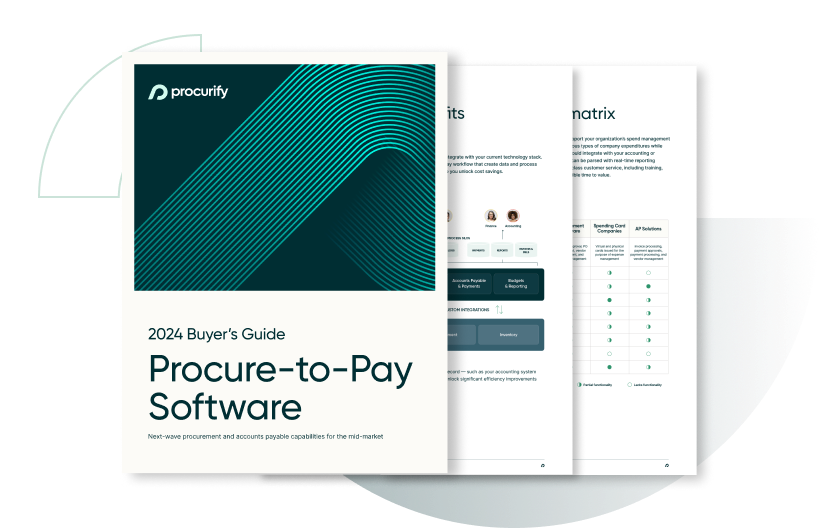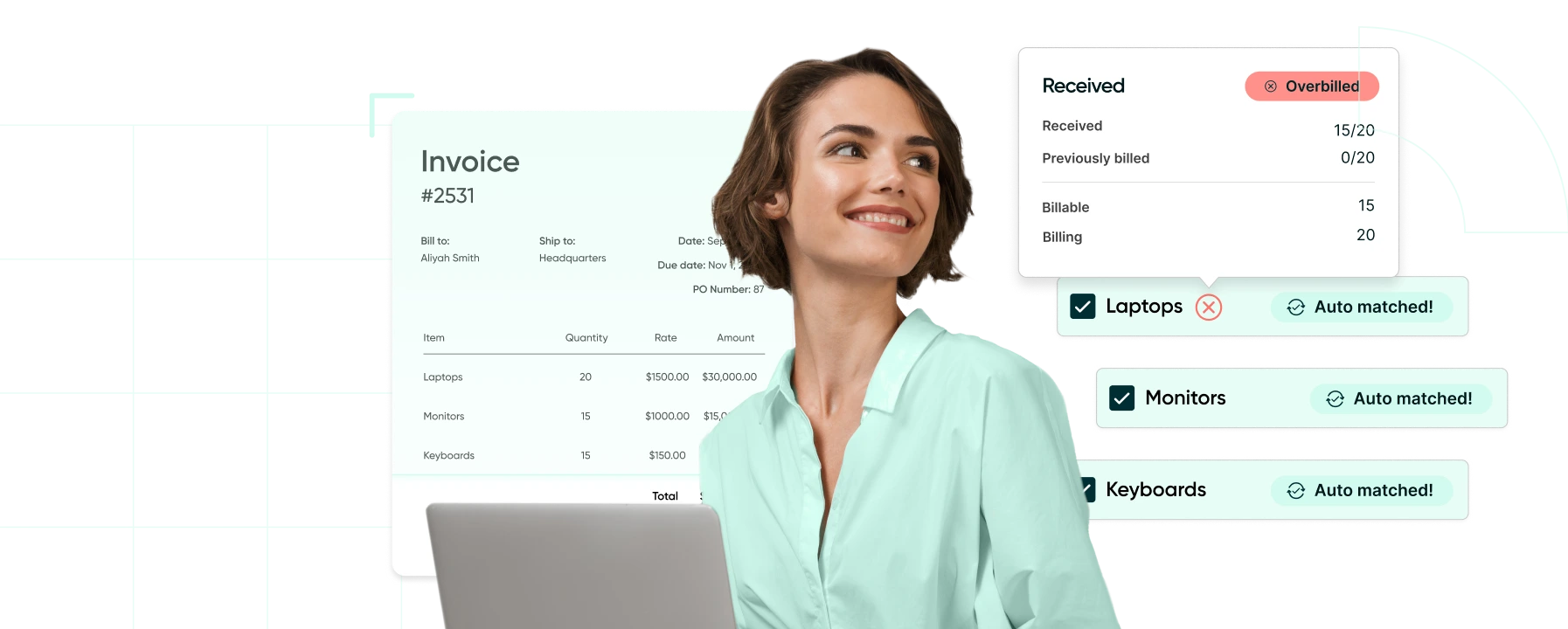
Direct vs Indirect Procurement: What’s the Difference?
In recent years, procurement has become a key business function in many organizations. Without procurement, many organizations would not be able to operate. But what exactly is procurement? Procurement involves making sure that all goods and services required for business purposes are properly acquired. This could be anything from raw materials to office supplies to advertising.
Direct vs. indirect procurement
Over time, two overlapping disciplines have emerged within procurement: Direct and indirect procurement.
In this blog, we explain the difference between direct vs. indirect procurement. But first, let’s clarify the roles that direct procurement and indirect procurement play within an organization.
What is direct procurement?
Direct procurement refers to the process of purchasing materials, goods, or services that are directly incorporated into a final product or service offering. Essentially, these are the raw materials and components that a business requires to manufacture its products. For instance, a car manufacturer would directly procure items like steel, rubber for tires, or electronic components.
These purchases are closely linked to production quantities, and fluctuations can directly impact the final product’s manufacturing. Efficient direct procurement is crucial because it affects the cost of goods sold (COGS) and has a direct bearing on a company’s profitability.
What is indirect procurement?
Indirect procurement, on the other hand, deals with the acquisition of goods and services that support the day-to-day operations of a business but are not part of the final product. Examples include office supplies, facility management, IT services, consulting services, and employee training programs. Unlike direct procurement, indirect procurement isn’t tied directly to production activities.
It affects a company’s operating expenses and not its COGS. While these purchases might seem less critical, inefficient indirect procurement can lead to increased operational costs, which can erode profit margins.
In essence, while both direct and indirect procurement are essential to the functioning of a business, they serve different areas. Direct procurement is intimately tied to a company’s primary manufacturing or service offering process, whereas indirect procurement supports a business’s infrastructure and operational needs. Proper management of both areas ensures that a business operates efficiently and remains competitive in its market.
Indirect procurement strategies
Indirect procurement, often overshadowed by its direct counterpart, deals with obtaining the resources that keep an organization running day-to-day. Given its broad spectrum, effective management necessitates specific strategies.
1. Track spending
Importance: Unlike direct procurement which often follows a structured purchase process, indirect procurement can be more decentralized. This can sometimes lead to oversight or ad-hoc spending.
Implementation: It’s essential to establish a system that tracks indirect spending across all departments. By understanding what is being spent, where, and by whom, finance and accounting teams can identify inefficiencies and potential areas for cost-saving. Additionally, consistent tracking ensures accountability and can deter frivolous spending.
2. Be strategic with your sourcing
Importance: Not all suppliers are equal in terms of quality, price, and reliability. Therefore, regularly evaluating your supplier list can lead to better deals and more effective partnerships.
Implementation: Engage in periodic reviews of supplier performance, renegotiate contracts when necessary, and ensure you’re receiving the best value. By collaborating with suppliers, you can potentially co-develop strategies that are mutually beneficial, leading to long-term relationships and consistent savings.
3. Use technology to stay informed
Importance: In the digital age, there’s a tool or software for almost every operation, and procurement is no exception.
Implementation: Leverage modern technologies, like data analytics software, to provide actionable insights into spending patterns. Automation tools can streamline purchase orders, approvals, and other routine tasks. Moreover, market research tools can help in identifying emerging trends, giving your organization a competitive edge.
4. Build relationships internally
Importance: Indirect procurement is a cross-departmental function. Without proper internal coordination, there could be duplication of efforts, overspending, or even conflicting activities.
Implementation: Promote inter-departmental communication. Regular meetings, centralized procurement dashboards, or even a dedicated liaison for larger organizations can help ensure everyone is aligned. Understanding the needs and constraints of each department can lead to more accurate forecasting and more strategic purchasing decisions.
Indirect procurement categories
Did you know that indirect procurement categories can make up about 40 percent of a company’s total spend? It’s also harder to draw a direct connection between indirect spending and the company’s profitability.
Indirect procurement encompasses a wide range of goods and services that support an organization’s operations. Some of the most common indirect procurement categories include:
- Office Supplies and Equipment: This category includes items such as paper, pens, printers, computers, and other standard office equipment and supplies.
- Facilities Management: This can range from cleaning and maintenance services to utilities like water, electricity, and gas. It might also include security services and waste management.
- Professional Services: This encompasses external expertise hired by the organization, such as consultants, lawyers, accountants, and marketing agencies.
- Travel and Expenses: Costs associated with business travel like flights, hotels, car rentals, and meals fall under this category.
- Information Technology (IT): It includes software licenses, IT hardware (like servers and networking equipment), IT consultancy, cloud services, and other technology-related services.
- Telecommunications: Services related to mobile, landline, internet connectivity, and other communication tools.
- Marketing and Advertising: This category includes costs related to branding, promotions, advertising campaigns, digital marketing, and event sponsorships.
- Training and Development: Expenses related to workshops, courses, certifications, and other forms of employee training.
- Human Resources: Including recruitment agency fees, background check services, employee wellness programs, and other HR-related services.
- Fleet Management: If the company operates vehicles, expenses related to their purchase, maintenance, insurance, and fuel would be part of this category.
- Uniforms and Personal Protective Equipment (PPE): For companies that require uniforms or safety equipment for their employees.
- Corporate Services: This can include catering, corporate gifts, memberships, and subscriptions.
Direct vs. Indirect Procurement: Understanding the Differences
Direct procurement is spending on services, goods, and materials that drive profit, performance, and competitive advantage. Whereas indirect procurement is expenditure on the maintenance, goods, and services needed for day-to-day operations, which do not directly contribute to a company’s bottom line.
Definition:
Direct Procurement involves purchasing materials, parts, or products that directly go into the production of the goods a company manufactures or sells. These are tangible components that become an integral part of the finished product.
Indirect Procurement relates to acquiring goods and services that facilitate an organization’s operations but don’t end up in the final product. These purchases support the day-to-day activities and infrastructure of the business.
Nature and Focus:
Direct Procurement is closely aligned with the company’s core production activities. It is directly tied to the business’s manufacturing quantities, and any interruptions can significantly disrupt production.
Indirect Procurement, on the other hand, supports business continuity but isn’t critical to the production process itself. It focuses more on operations, administrative tasks, and general company activities.
Examples:
Direct Procurement includes raw materials such as metal for car manufacturing, cotton for clothing production, or ingredients for food processing.
Indirect Procurement covers areas like office supplies, software licenses, consulting services, cleaning services, and employee training programs.
Budgeting and Planning:
Direct Procurement often involves large budgets and long-term contracts, given the critical importance of these purchases for production. Procurement decisions are closely linked to forecasted production volumes.
Indirect Procurement might involve more ad-hoc purchases and may not always be based on long-term contracts. The budgeting might be more decentralized, with different departments having separate budgets for their needs.
Strategic Importance:
Direct Procurement is strategically significant because it impacts the cost of goods sold (COGS) and, therefore, the company’s profit margins. The quality of direct purchases also affects the quality of the final product.
Indirect Procurement, while sometimes seen as less strategically crucial, can cumulatively have a significant impact on operating expenses. Inefficiencies or wastages in indirect procurement can erode profit margins, albeit in a less direct manner.
Supplier Relationships:
Direct Procurement often necessitates building strong, long-term relationships with suppliers, given the critical nature of the goods procured. Consistency in quality and timely delivery are paramount.
Indirect Procurement might involve a wider array of suppliers with varying degrees of relationship depth. Some might be long-term contracts (like software licenses), while others could be one-off transactions (like office furniture).
Managing supplier relationships
Supplier relationships are central to procurement, and managing these relationships effectively has far-reaching consequences for businesses. Here’s an expanded perspective on the importance of procurement for supplier relationships:
1. Stability and Continuity of Supply:
Importance: Reliable suppliers ensure that businesses have the necessary materials or services when they’re needed. This consistency is crucial for production continuity and meeting customer demands.
Procurement’s Role: By establishing clear contracts, setting expectations, and regularly communicating with suppliers, procurement can ensure a stable supply chain and mitigate risks of disruption.
2. Quality Assurance:
Importance: The quality of supplied materials or services directly impacts the end product’s quality and the company’s reputation.
Procurement’s Role: Procurement teams can implement quality checks, set clear quality standards in contracts, and collaborate with suppliers for continuous improvement. Regular audits and inspections further ensure adherence to these standards.
3. Cost Management and Efficiency:
Importance: Cost-efficient operations give businesses a competitive edge, and the prices at which materials or services are procured play a significant role.
Procurement’s Role: Effective negotiation, leveraging volume discounts, and exploring cost-saving opportunities in collaboration with suppliers can lead to significant savings.
4. Innovation and Growth:
Importance: Suppliers, especially those leading in their domains, can offer innovative solutions that can propel businesses forward.
Procurement’s Role: By nurturing strategic relationships with key suppliers, procurement can tap into these innovations, from new materials to advanced technologies, potentially giving businesses a market advantage.
5. Ethical and Sustainable Operations:
Importance: Modern consumers and businesses are increasingly valuing ethical and sustainable operations. The practices of suppliers, consequently, reflect on the companies they supply to.
Procurement’s Role: Procurement teams can ensure suppliers adhere to ethical labor practices, environmental standards, and other corporate social responsibility (CSR) norms. They can include these requirements in contracts and regularly review supplier practices.
6. Risk Management:
Importance: Suppliers can pose various risks, from financial instability to geopolitical concerns in their region.
Procurement’s Role: A comprehensive supplier assessment, including their financial health, operational practices, and regional risks, can help in selecting low-risk suppliers. Procurement can also strategize on diversifying the supplier base to spread risks.
7. Building Trust and Partnership:
Importance: Trust is a foundational element in any relationship. When suppliers view companies as trustworthy partners, it can lead to better collaboration, flexibility in negotiations, and priority treatment.
Procurement’s Role: By honoring contract terms, ensuring timely payments, and maintaining open communication, procurement can foster trust. Over time, this trust can evolve into partnerships where both parties jointly solve problems and seek mutual growth opportunities.
Managing inventory
Inventory management plays a crucial role in both direct and indirect procurement, albeit in different ways. Understanding the connection between inventory management and procurement can lead to more efficient operations and cost savings. Let’s delve into how inventory management affects both:
Direct Procurement and Inventory Management:
Demand Forecasting:
Accurate inventory management can help in predicting future product demand. This forecasting allows procurement teams to make timely and appropriate purchasing decisions, ensuring that materials are available for production when needed.
Cost Savings:
Holding excessive inventory ties up capital and increases storage costs. Efficient inventory management ensures that procurement for direct materials aligns closely with production needs, minimizing stock levels without risking stockouts.
Supplier Lead Time:
Understanding the time it takes for suppliers to fulfill orders (lead time) is crucial. Effective inventory management, coupled with lead time insights, can guide procurement teams on when to place orders to avoid production disruptions.
Reduced Stockouts:
Running out of essential production materials can be costly, causing production halts and delayed deliveries. Proper inventory management ensures that reorder levels for directly procured materials are set appropriately, minimizing stockout risks.
Improved Supplier Relationships:
Predictable and consistent ordering patterns, facilitated by good inventory management, allow suppliers to plan better, fostering trust and potentially leading to better terms and collaborations.
Indirect Procurement and Inventory Management:
Optimized Operations:
Indirect items, like office supplies or maintenance tools, may not directly impact production, but shortages can hamper operations. Efficient inventory tracking ensures that such items are always on hand when needed.
Bulk Purchasing and Discounts:
Monitoring inventory levels of indirect items can highlight patterns in usage. Procurement can leverage this data to make bulk purchases during discount periods or negotiate better terms with suppliers.
Reduced Wastage:
Over-procuring indirect items, especially those with shelf lives (like certain IT equipment or software licenses), can lead to wastage. Proper inventory management ensures that only the required quantities are procured.
Budgeting and Cost Allocation:
Effective inventory tracking for indirectly procured items provides clarity on departmental usage rates. This can guide budgeting decisions and ensure cost allocations are accurate.
Vendor Managed Inventory (VMI):
For certain indirect items, suppliers can be given the responsibility of managing inventory levels. This ensures a constant supply, reduces administrative burdens, and often leads to cost savings.
Spend Management
Direct and indirect procurement play pivotal roles in the overall spend management of an organization. Understanding these procurement types and their nuances can help companies optimize their expenses and improve profitability.
Direct Procurement and Its Impact on Spend Management:
- Major Cost Factor: For manufacturing and product-based businesses, direct procurement often represents a significant portion of total costs. Therefore, effective management of direct spend can have a major influence on the company’s overall profit margins.
- Volume Discounts: By forecasting demand accurately and consolidating orders, companies can achieve economies of scale, leading to volume discounts.
- Supplier Negotiations: Strategic relationships with key suppliers can lead to better pricing, payment terms, and other benefits, directly affecting spend management.
- Quality Control: Investing in high-quality raw materials can lead to fewer defects and returns, which, in the long run, can result in cost savings and enhanced brand reputation.
- Inventory Costs: Effective direct procurement strategies can minimize holding costs, reduce the risk of obsolescence, and decrease wastage, all of which influence spend management.
Indirect Procurement and Its Impact on Spend Management:
- Operational Efficiency: While indirect procurement may not directly affect the cost of goods sold, inefficiencies or disruptions can lead to operational delays, impacting the overall financial health of a company.
- Decentralized Spend: Indirect spend can be scattered across various departments, from IT to facilities to HR. Centralizing or streamlining this spend under a unified procurement strategy can lead to cost savings.
- Contract Management: Managing contracts for services like software subscriptions or consultancy ensures that companies aren’t overspending or paying for redundant services.
- Economies of Scale: Similar to direct procurement, consolidating purchases for frequently used indirect goods or services can result in volume discounts.
- Supplier Diversification: Relying on a single supplier for critical indirect goods or services can pose a risk. Diversifying suppliers can lead to competitive pricing and reduce supply chain risks.
Holistic Spend Management:
Incorporating both direct and indirect procurement into an overarching spend management strategy offers several advantages:
- Visibility: Companies gain a clear picture of their total spend, which is essential for budgeting, forecasting, and strategic planning.
- Negotiating Power: With a holistic view of spend, companies can negotiate better with suppliers, leveraging their total business potential.
- Process Optimization: Streamlined procurement processes, covering both direct and indirect spend, can lead to operational efficiencies and cost savings.
- Compliance and Risk Management: A unified strategy ensures adherence to company policies, regulatory standards, and minimizes risks associated with supplier relationships.


